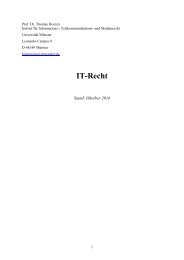3d4yVkKMl
3d4yVkKMl
3d4yVkKMl
You also want an ePaper? Increase the reach of your titles
YUMPU automatically turns print PDFs into web optimized ePapers that Google loves.
- 44 -<br />
account whether research objectives can be achieved using non-lethal methods. Japan has accepted<br />
that it is under an obligation to give due regard to such recommendations. Secondly, as noted<br />
above (see paragraphs 80 and 129), Japan states that, for reasons of scientific policy, “[i]t does<br />
not . . . use lethal means more than it considers necessary” and that non-lethal alternatives are not<br />
practical or feasible in all cases. This implies the undertaking of some type of analysis in order to<br />
ascertain that lethal sampling is not being used to a greater extent than is necessary in relation to<br />
achieving a programme’s stated research objectives. Thirdly, the two experts called by Australia<br />
referred to significant advances in a wide range of non-lethal research techniques over the past<br />
20 years and described some of those developments and their potential application with regard to<br />
JARPA II’s stated objectives. It stands to reason that a research proposal that contemplates<br />
extensive lethal sampling would need to analyse the potential applicability of these advances in<br />
relation to a programme’s design.<br />
138. The Court did not hear directly from Japanese scientists involved in designing<br />
JARPA II. During the oral proceedings, however, a Member of the Court asked Japan what<br />
analysis it had conducted of the feasibility of non-lethal methods prior to setting the sample sizes<br />
for each year of JARPA II, and what bearing, if any, such analysis had had on the target sample<br />
sizes. In response, Japan referred to two documents: (1) Annex H to the 1997 interim review of<br />
JARPA by the Scientific Committee and (2) an unpublished paper that Japan submitted to the<br />
Scientific Committee in 2007.<br />
139. The first of these documents is not an analysis of JARPA II and is not a study by Japan.<br />
It is a one-page summary by the Scientific Committee of opposing views within the Committee on<br />
the need to use lethal methods to collect information relating to stock structure. Japan stated that<br />
this document “formed the basis of section IX of the 2005 JARPA II Research Plan”. Section IX,<br />
entitled “Necessity of Lethal Methods”, comprises two short paragraphs that contain no reference<br />
to feasibility studies by Japan or to any consideration by Japan of developments in non-lethal<br />
research methods since the 1997 JARPA review. Japan identified no other analysis that was<br />
included in, or was contemporaneous with, the JARPA II Research Plan.<br />
140. The 2007 document to which Japan refers the Court discusses the necessity of lethal<br />
methods in JARPA, not JARPA II. It states in summary format the authors’ conclusions as to why<br />
certain biological parameters (listed in relation to particular JARPA objectives) required (or did not<br />
require) lethal sampling, without any analysis and without reference to the JARPA II objectives.<br />
141. Thus, there is no evidence of studies of the feasibility or practicability of non-lethal<br />
methods, either in setting the JARPA II sample sizes or in later years in which the programme has



